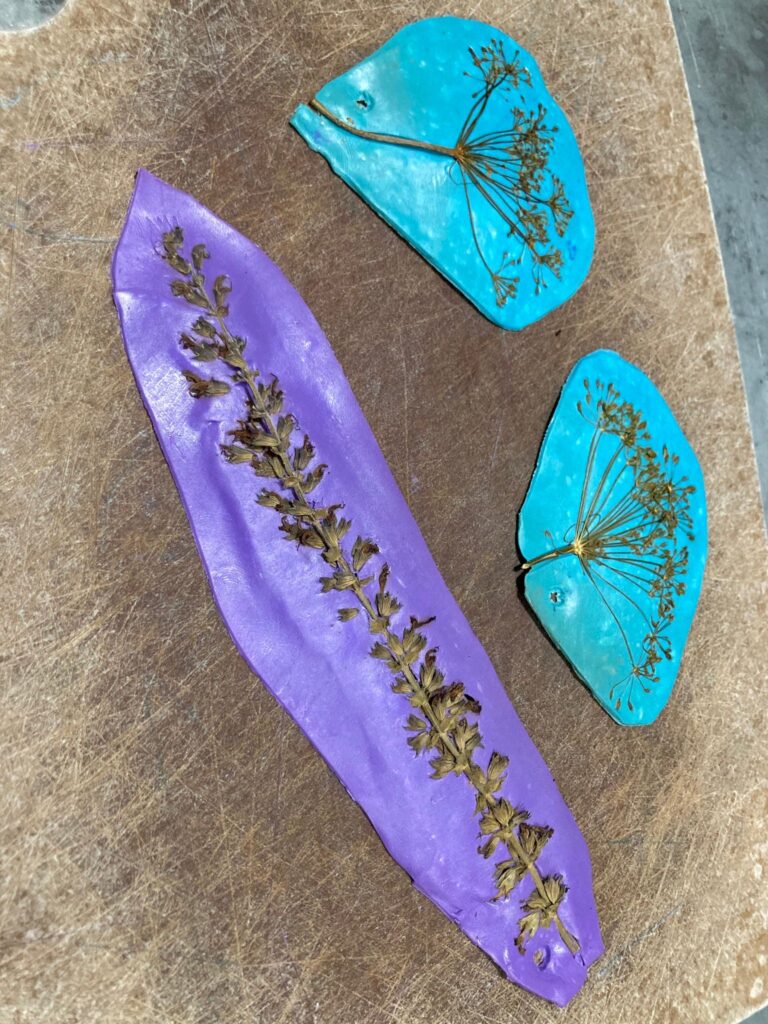Garden & polymer clay experiments. First picture is a swallowtail caterpillar on my dill — I love swallowtail butterflies, they’re my favorite, I’m sorry monarchs! I love you too.
I harvested some of the umbels (I think that’s what those are called), along with snipping off some flowering bits from my various basils (which I should have done earlier; you should keep those snipped to encourage leaf production)
First experiment, I tried just pressing them into the clay — so pretty and bright (photo 3). But as I suspected, when you bake the clay to set it, the botanicals brown quite a bit; there’s still a little green, but you lose the brightness (photo 4). I think resin works better for preserving rich color. I also tried a dried salvia stem, which worked okay?
And of course, now you have exposed botanicals on the top, which are fragile and will tend to degrade more if left as is. So I think what most people do is add a resin layer on top to set it. I may try that, but I’m not sure I like the overall effect enough to go to the effort. I’m not quite sure how you’d apply the resin, either — brush it on, perhaps? Usually you’re pouring resin into a mold, but that’s not what I’m going for here.
Well, interesting. But I think pressing the botanicals and then removing them gave an effect I like better — see next posts.




